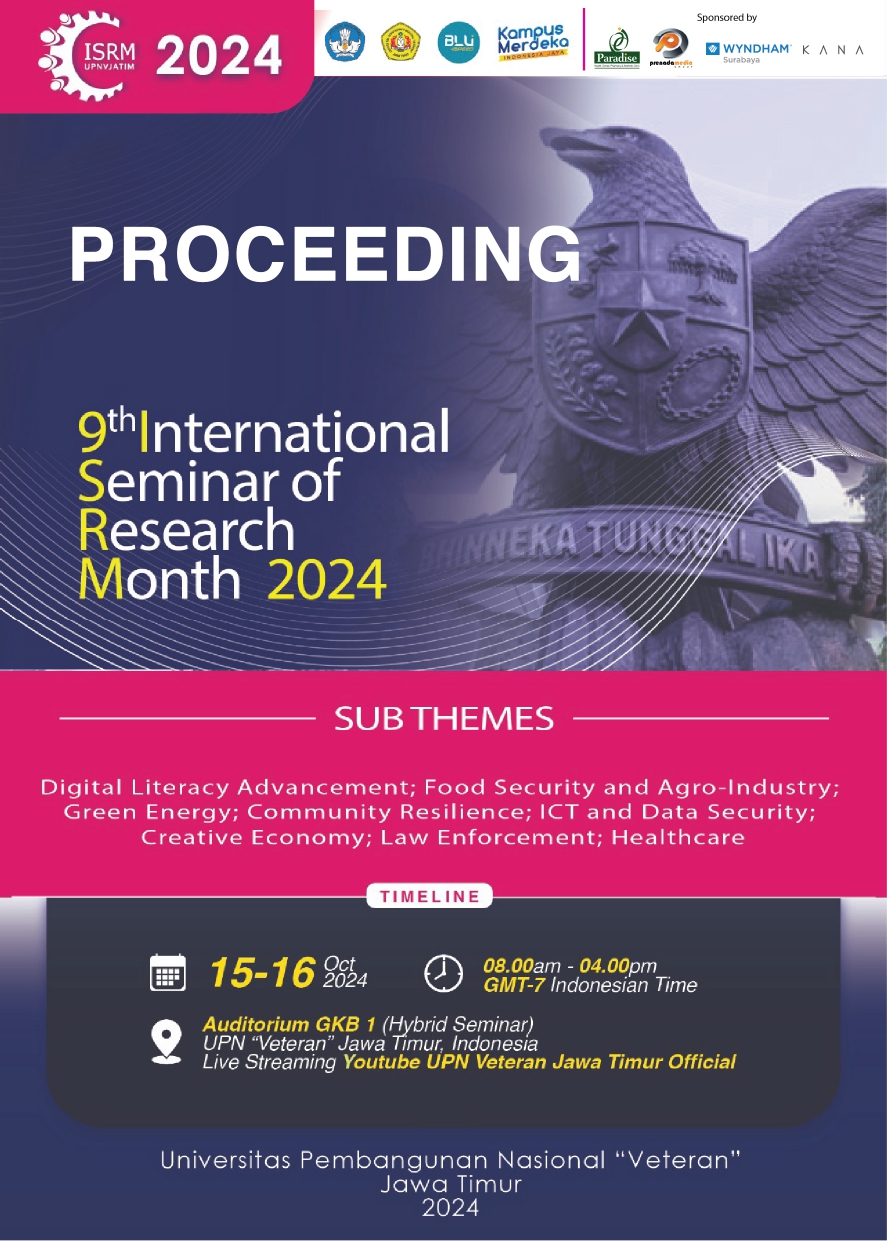Characterization of Artificial Feed for Armyworms (Spodoptera frugiperda) as a Support for Pest Control Technology Research
DOI:
https://doi.org/10.11594/nstp.2025.4730Keywords:
Artificial feed, Spodoptera frugiperda, feed characterization, formulationAbstract
Spodoptera frugiperda is one of the pests known for its ability to cause quite severe damage to cultivated plants, so research related to S. frugiperda is the focus of research both on a field and laboratory scale. Laboratory-scale S. frugiperda research is generally carried out by keeping target insects as research materials in large quantities. The use of natural feed in insect maintenance often experiences limitations, so artificial feed is developed for S. frugiperda. This study was conducted to determine the characteristics of the artificial feed being developed. The research method is a qualitative method with parameters of color observation, weight per 100 grains, dry weight, and wet weight in three artificial feed formulas that were developed. The results of the study showed that in formulas one and two, the color of the feed was brownish green, while formula three was light brown. The weight per 100 grains of artificial feed showed that formula one had the highest weight and formula three had the lowest weight. The highest dry weight and wet weight were obtained in Formula 2, while the lowest weight was obtained in Formula 3. The conclusion that can be drawn from this study is that the characteristics of artificial feed for S. frugiperda, including color, weight per 100 grains, dry weight, and wet weight of the feed, are influenced by the formulation of the artificial feed.
Downloads
References
Ambarningrum, T. B. (2001). Tabel hidup ulat grayak (Spodoptera litura) (Lepidoptera: Noctuidae) dalam kondisi laboratorium. Jurnal Sains Teknologi, 7, 21-28.
CABI. (2019). Spodoptera frugiperda (Fall Armyworm). ISC
Carlile, M. J., & Watkinson, S. J. (1994). The fungi. Academi Press Harcout Brase & Company Publishers. London.
Elvira, S., Gorría, N., Muñoz, D., Williams, T., & Caballero, P. (2010). A simplified low-cost diet for rearing Spodoptera exigua (Lepidoptera: Noctuidae) and its effect on S. exigua nucleopolyhedrovirus production. Journal of Economic Entomology, 103(1), 17-24.
Gunawan, A. F. (2023). Pengaruh pakan alami dan pakan buatan terhadap kebugaran ulat grayak (Spodoptera frugiperda J.E). Smith. Fakultas Pertanian: Universitas Lampung.
Isnawati. (2009). Biokimia. Surabaya: Unesa University Press.
Kartasudjana, R., & Suprijatna, E. (2006). Manajemen ternak unggas. Penebar Swadaya Jakarta.
Kartini. (2015). Kacang koro, Canavalia ensiformis (Linn) dan kuning telur puyuh, Couturnix japonica (Temminck & Schlegel) sebagai pakan buatan Crocidolomia binotalis (Zeller) (Lepidoptera: Pyralidae). Tesis. Yogyakarta: Fakultas Biologi, Universitas Gadjah Mada.
Lestari, S., Ambarningrum T, B., & Pratiknyo, H. (2013). Tabel hidup Spodoptera litura Fabr. dengan pemberian pakan buatan yang berbeda. Jurnal Sain Veteriner, 31(2), 166-179.
Maldonado, J., Pereira, T., & Polonia, J. (2011). Arterial stiffness predicts cardiovascular outcome in a low-to-moderate cardiovascular risk population: the EDIVA (Estudo de DIstensibilidade VAscular) project. J Vasc Surg, 54(3), 911.
Nalim, D. M., & Parra, J. R. P. (1993). Biologia, nutricao quantitativa e controle de qualidade de populacoes de spodoptera frugiperda (jE simth. 1797) em duas dietas artificiais. Resumos.
Oomen, P. A. (1982). Studies On Population Dynamics of Scarlet Mite, Brevipalpus phoenicis, A pest of tea in Indonesia. Meded Landbouwhoge School Wagengingen, 82, 1-82.
Santoso., & Ekastuti, D. R, (2013). Pertumbuhan ulat sutera Bombyx mori (Lepidoptera: Bombycidae) pada berbagai sumber protein dalam pakannya. Jurnal Ilmu Pertanian Indonesia (JIPI), 18(2), 92-96.
Singh, P. (1977). Artificial diet for insects, mites, and spiders. Plenum Data Company, New York. Pp. 201-209.
Singh, P. (1982). Artificial diet for insect, mites and spiders (2nd ed). New York: IFI/Plenum.
Sudarjat, Rosmiyati, A., Sunarto, T., & Kurniawan, W. (2020). Pengaruh komposisi pakan buatan terhadap perkembangbiakan Menochilus sexmaculatus Fabricius (Coleoptera: Coccinellidae). Jurnal Agrikultura, 31(2), 116-125.
Susrama, I. G. K. (2017). Kebutuhan nutrisi dan substansi dalam pakan buatan serangga. Agroekoteknologi Tropika, 6(3), 310–8.
Syamsu, J. A. (2007). Karakteristik fisik pakan itik bentuk pellet yang diberi bahan perekat berbeda dan lama penyimpanan yang berbeda. Jurnal Ilmu Ternak Universitas Padjadjaran, 7(2), 123.
Taufika, R., Siti, S., & Dian, H. (2022). Pemeliharaan ulat grayak (Spodoptera litura Fabricius) (Lepidoptera: Noctuidae) menggunakan pakan buatan pada skala laboratorium. Agromix, 13(2), 47-54.
Wibisono. (1999). Rearing of bollworm on artificial diet. J. Econ. Entomol., 55, 140-148.
Downloads
Published
Conference Proceedings Volume
Section
License

This work is licensed under a Creative Commons Attribution 4.0 International License.
Authors who publish with this proceedings agree to the following terms:
Authors retain copyright and grant the Nusantara Science and Technology Proceedings right of first publication with the work simultaneously licensed under a Creative Commons Attribution License that allows others to share the work with an acknowledgement of the work's authorship and initial publication in this proceeding.
Authors are able to enter into separate, additional contractual arrangements for the non-exclusive distribution of the proceedings published version of the work (e.g., post it to an institutional repository or publish it in a book), with an acknowledgement of its initial publication in this proceeding.
Authors are permitted and encouraged to post their work online (e.g., in institutional repositories or on their website) prior to and during the submission process, as it can lead to productive exchanges, as well as earlier and greater citation of published work (See the Effect of Open Access).










